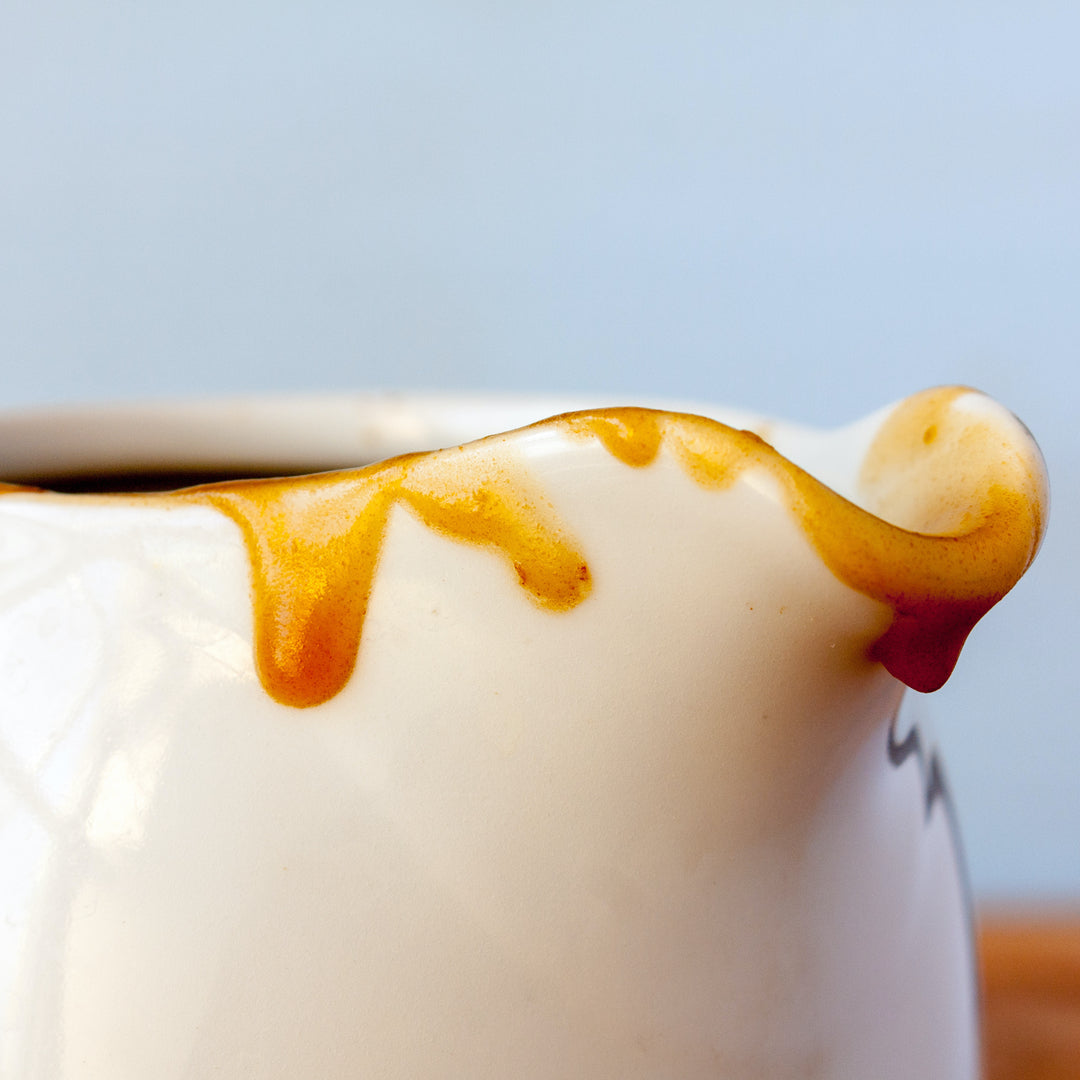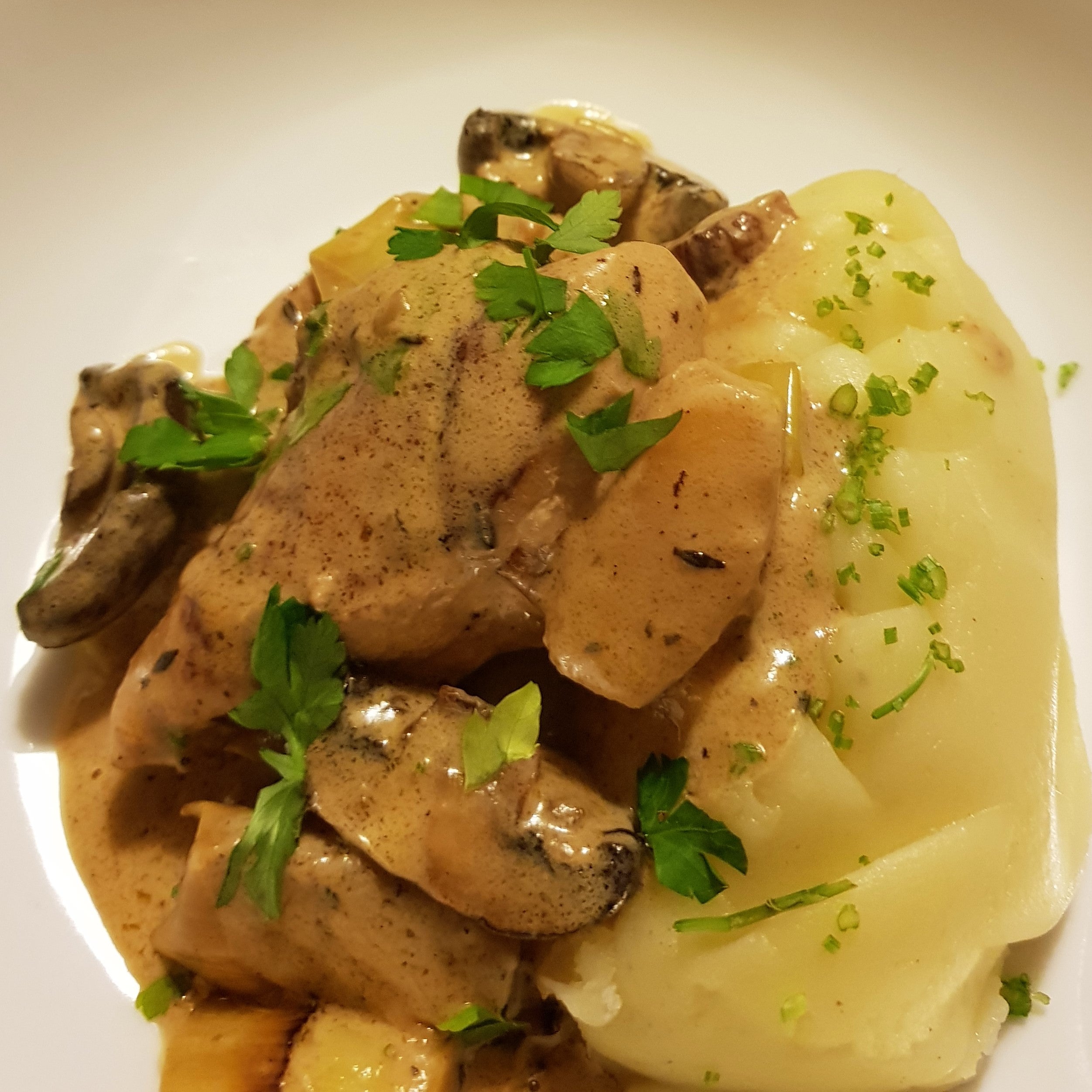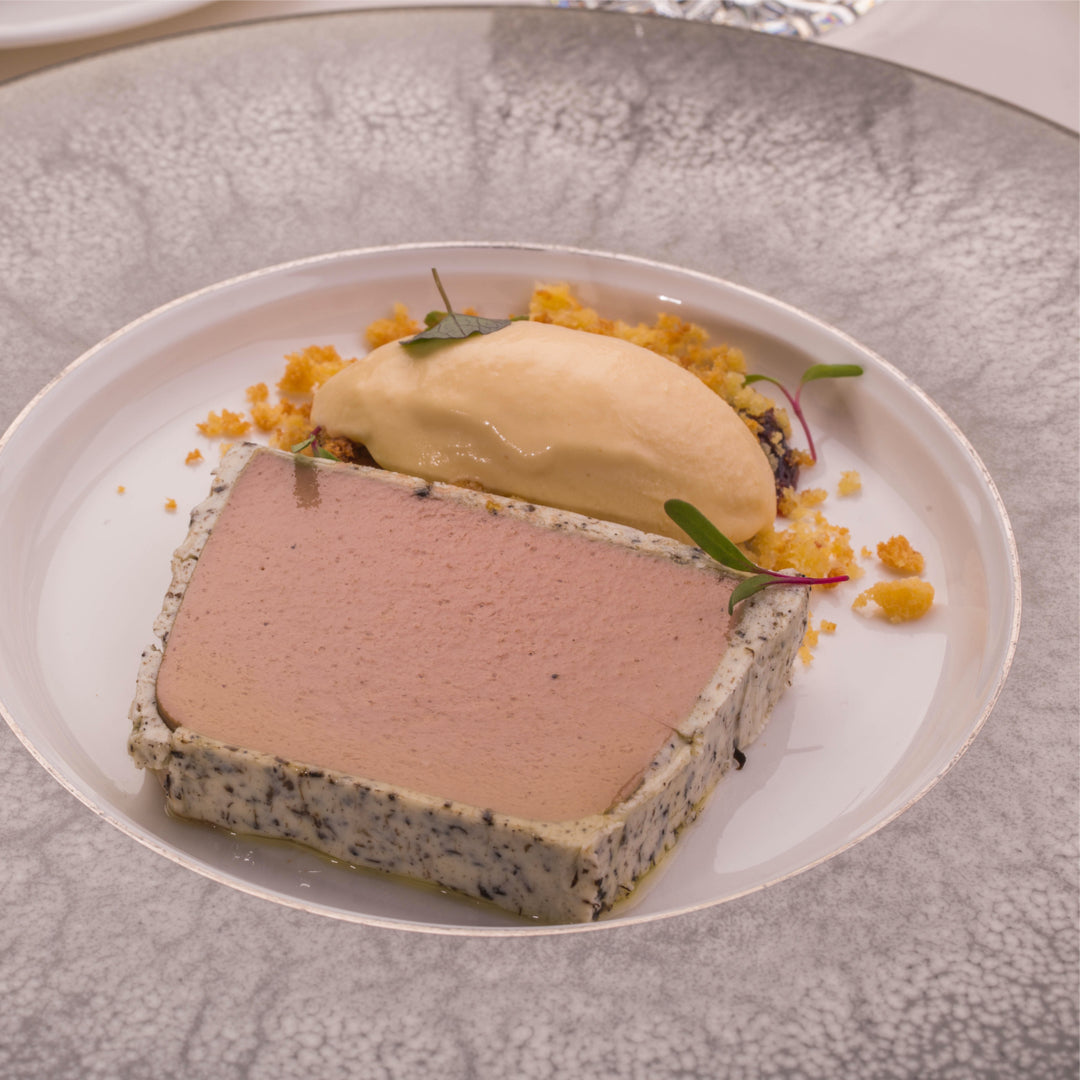Vegetarian Jus

Best with dry white vermouth
This is a great way to serve a luxurious and rich sauce that has all of the benefits of a meat sauce but without any meat products. It is extremely versatile and can be served with vegetable, fish and meat dishes alike. The weights of the vegetables do not need to be exact and as we are not actually eating the veg feel free to use trimmings and swap out or add any other flavours.
Ingredients
- 400g Aubergine
- 100g Cauliflower
- 50g Celery
- 250g Carrots
- 100g Beetroot
- 100g Shiitake mushroom
- 200g Celeriac
- 100g Broccoli
- 500g Onions
- 80g Fresh garlic
- 200g leeks
- 200g fennel
- 20 g Tomato paste
- 150g Fresh tomatoes cut in half
- 20 g Kombu sheets
- 100g Olive oil
- 2.5kg Water
- 4g Salt
- 2g Pectin
- 10 Stalks of thyme
- 2 Stalks of rosemary
- 10 Stalks of Parsley
- ½ Vanilla pod
- 4 Whole star anise
- 2 Cloves
- 5 Juniper berries
- 250g In the loop No 18 Chardonnay Vermouth
- 10g xanthan gum (you may not use it all)
Equipment
- Speed peeler or Mandolin
- Deep saucepan
- Sieve
- Digital scales
- Roasting dishes
- Hand blender
Method
To begin, ensure the vegetables are clean from any dirt by washing them under cold running water. You may need to cut the leek lengthways to ensure no dirt is trapped inside it.
Next, shave all the veg with your mandolin or speed peeler keeping the cleaned skin on as this will add lots of flavour to the final product.
Mix these shavings with all of the tomato paste, kombu, (it doesn’t matter if it breaks up), thyme, rosemary, star anise, clove, juniper berries and olive oil before placing them into a roasting dish in 1 single layer (you may need more trays depending on the size of your trays.)
Roast these in the oven for at least an hour at 170°C (or until all browned.)
Once you are happy all of the veg is roasted, remove it from the oven and transfer to a deep saucepan.
Deglaze the tray by placing on the heat and adding the vermouth. As it bubbles, scrape the tray to lift off any delicious caramelised pieces and add this to the saucepan. (This process will give you a better flavour, colour and easier washing up).
Cover the mix with the water, add parsley and simmer gently for 30 minutes. (You should only see 1 bubble every minute. If you boil it too hard at this stage, your sauce may taste like boiled veg.)
After 30 minutes, strain the sauce through a fine sieve and place it back on the stove to reduce by half. Now scrape the seeds from the vanilla and add the seeds and husk to the pan. Taste and season the sauce as you are reducing it (the more you reduce it, the more intense the flavour will be) and when you are happy with the seasoning and taste, weigh the total amount of liquid you have left.
The last stage is to thicken the sauce to achieve the same moth feel you get from meat sauces, by adding xanthan gum. It is excellent at thickening sauces so we need to be precise.
To do this use the total weight of the sauce that is left. Mine was 1200g. Then multiply this by 0.005 (which is 0.5%).
1200 x 0.005 = 6g of xanthan.
Blend in the pectin and xanthan gum to the still hot sauce to thicken it.
Serve straight away or store in an air tight container for up to 5 days.
You can also adjust the thickness depending on your dish. This gravy in a pie might use 9g of xanthan or a thinner soup may use 3g.






Comments